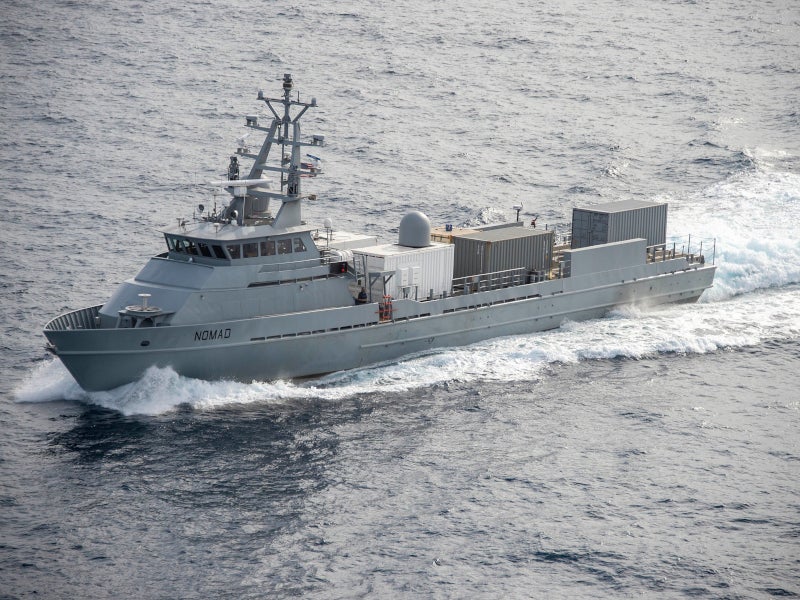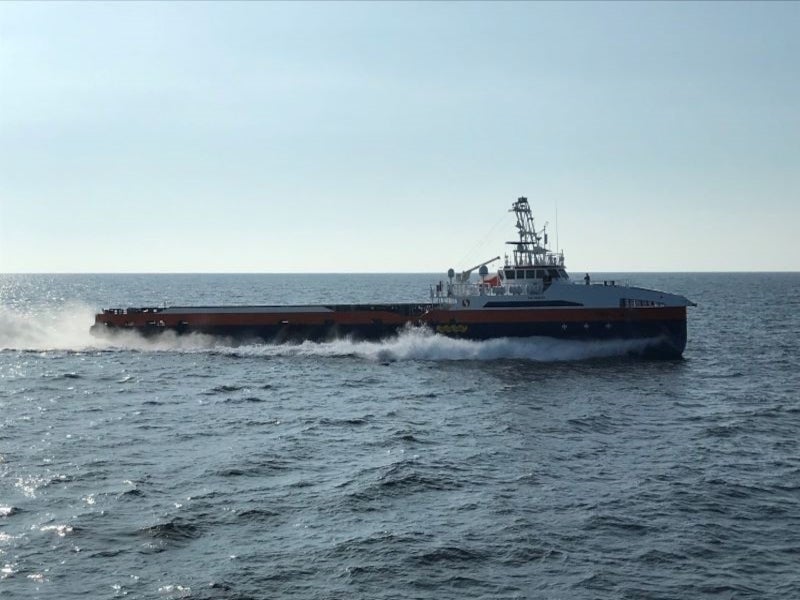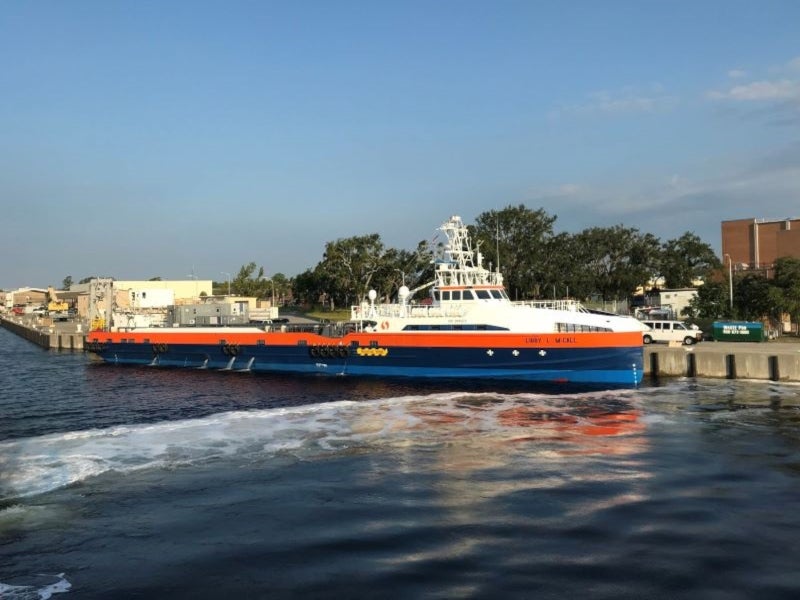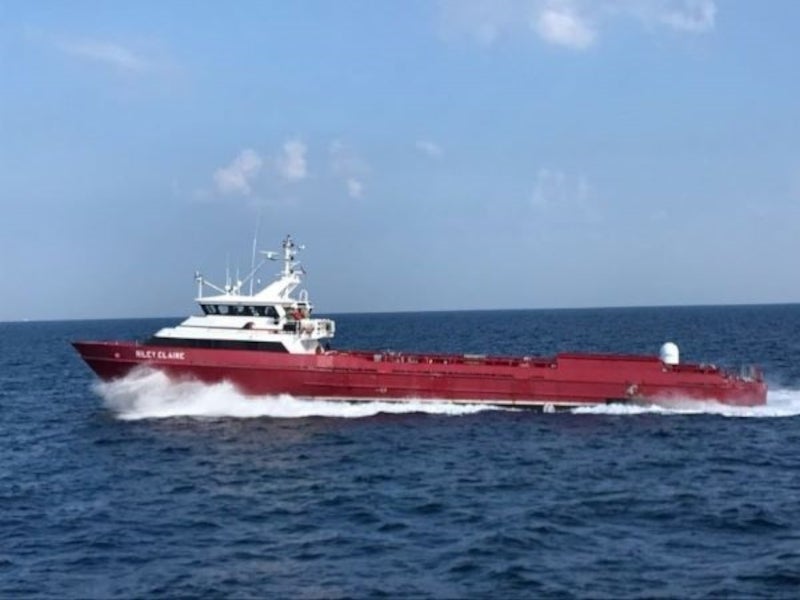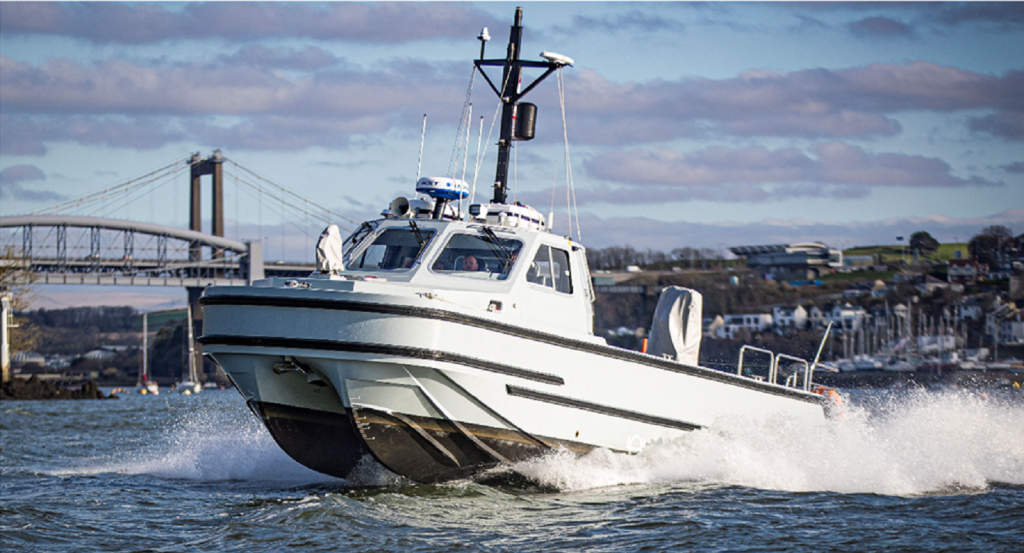Ghost Fleet Overlord is a family of experimental unmanned surface vessels (USVs) operated by the US Navy.
The US Department of Defense’s (DOD) Strategic Capabilities Office (SCO), a secretive research and development organisation within the Pentagon, began the Ghost Fleet Overlord Programme in 2018 to accelerate the integration of large unmanned surface vessels (LUSVs) into the US Navy fleet.
As part of the programme, the SCO partnered with the Unmanned Maritime Systems (PMS 406) of the Navy to convert large, commercially available vessels to autonomous operation.
The Ghost Fleet Overlord unmanned surface vessels (OUSVs) are being built by Austal USA, a shipbuilding company based in Mobile, Alabama, US.
Ghost Fleet Overlord Phase I development and testing details
Phase one of the Overlord programme included the conversion of two existing commercial fast supply vessels into USVs, along with autonomy system integration, demonstration of navigational autonomy, and hull, mechanical and electrical system reliability upgrades.
The first phase was concluded in September 2019, with a successful capstone demonstration of two Overlord vessels, namely OUSV 1 Ranger and OUSV 2 Nomad. Both test vessels performed interactions in compliance with the Convention on the International Regulations for Preventing Collisions at Sea.
Additionally, more than 600 hours of autonomy testing were completed during the first phase, including several long-range autonomous transits in a complex navigational environment.
Phase II development and testing of Ghost Fleet Overlord LUSVs
Phase two of the programme focused on extended testing of OUSV 1 Ranger and OUSV 2 Nomad for vessel endurance, autonomous operations, and interoperability in more complex and challenging naval operations.
It involved the integration of government-furnished command, control, communications, computers and intelligence systems and payloads, and the demonstration of the reliability of automated hull, mechanical, and electrical systems.
The SCO and the US Navy conducted long-range autonomous transits with Ghost Fleet Overlord USVs to the Pacific, passing through the Panama Canal, to test their autonomous capabilities.
The Nomad OUSV completed its journey of 4,421 nautical miles in June 2021, following the first OUSV Ranger, which completed a similar transit in October 2020. Both the USVs travelled most of the distance in autonomous mode except for the stretch passing through the Panama Canal, which was covered in manual mode.
The USVs were utilised in fleet experimentation exercises to improve the autonomy systems to demonstrate the reliability of systems and explore the concepts by which the vessels can be employed for coordinated operations with manned combatants integrated with command-and-control systems and numerous payloads. They provided crucial system data and demonstrated the capabilities required for the continued maturation and development of USVs for complex naval missions.
The SCO completed the experimental programme in January 2022 and transferred the USVs to the US Navy. Both vessels are currently with Surface Development Squadron One (SURFDEVRON) in San Diego, California.
Another LUSV called Mariner (OUSV 4) entered the US Navy fleet in August 2022, with the final Overlord vessel Vanguard (OUSV 3) still under construction.
Overlord USVs design and features
The Overlord LUSVs are between 200ft and 300ft in length, and have full load displacements of up to 2,000 tonnes. The bigger vessels have greater fuel storage capacity and a greater range, and will also be able to haul heavier loads.
The vessels are designed as low-cost, high-endurance ships that can be reconfigured with various modular payloads including anti-surface warfare and strike payloads for unmanned missions.
Each LUSV can be armed with a vertical launch system with 16–32 missile-launching tubes.
Mariner OUSV features
OUSV 4 Mariner is equipped with next-generation capabilities, including an advanced command-and-control system, virtualised Aegis weapon system and autonomous navigation system. It is expected to begin operations with the SURFDEVRON in 2023, after more upgrades and testing.
Contractors involved
Austal USA collaborated with L3Harris Technologies, a defence technology company based in the US, for the construction and modification of autonomous capabilities of the Overlord vessels.
The Mariner OUSV is managed by prime contractor Leidos, an engineering company based in the US. The vessel was constructed by Gulf Craft at its shipbuilding facility in Franklin, Louisiana.
Lockheed Martin provided the Aegis surface combat system for the Mariner OUSV.

